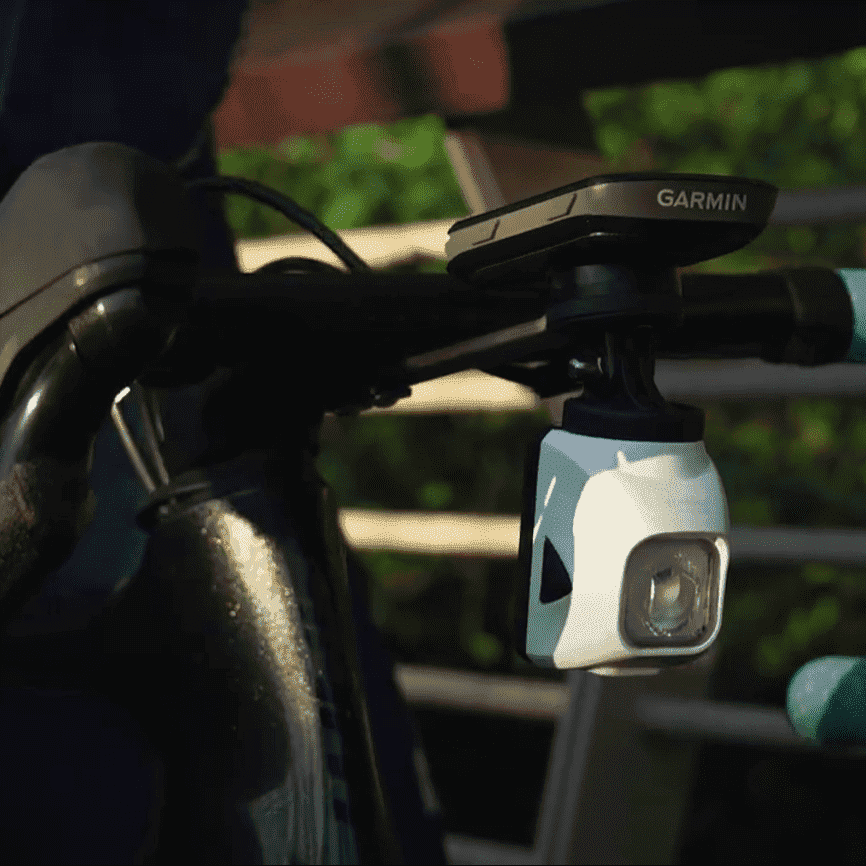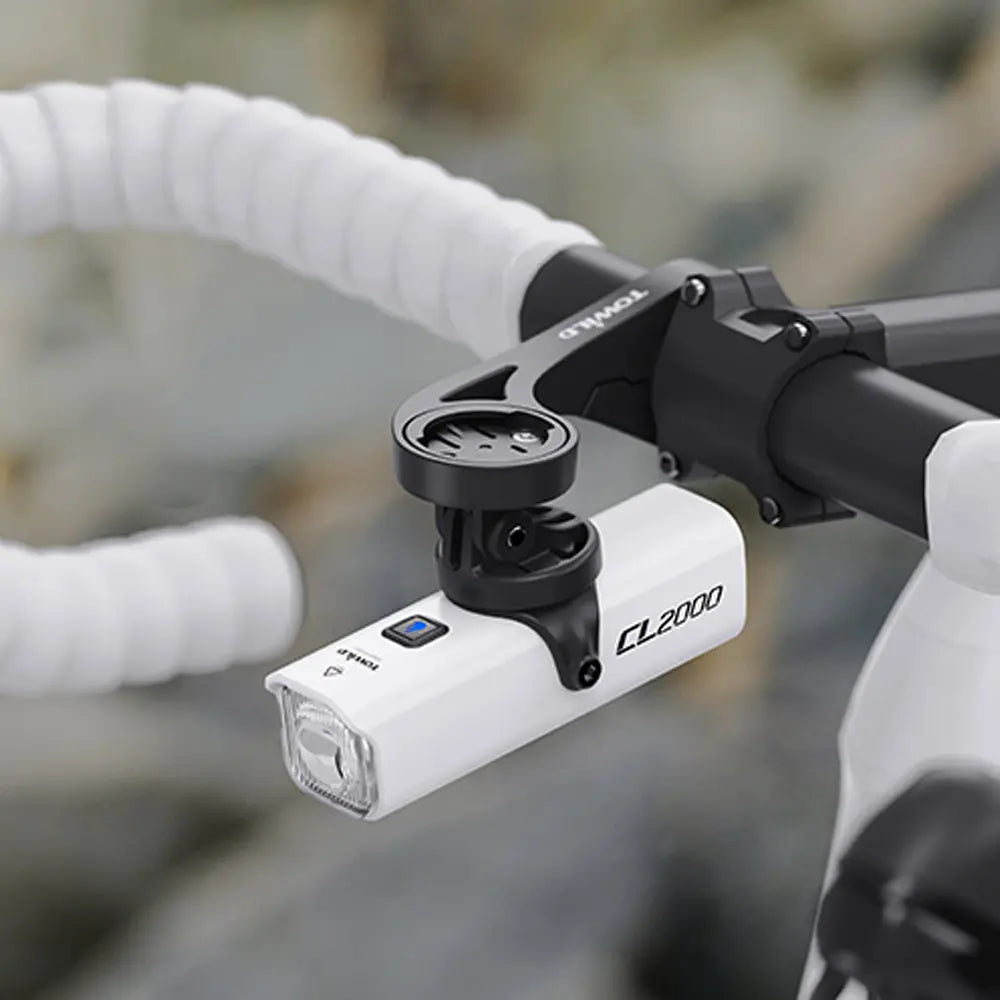Ultimate Guide to Bicycle Power Meters
The Ultimate Guide to Cycling Power Meters: From Principles to Purchasing

A power meter is a precision instrument for monitoring training intensity and tracking performance gains. But with so many dazzling products on the market, how do you choose the one that fits you best? This guide breaks down the mechanics, compares the types, and highlights key buying factors to help you make a smart decision.
💡 Key Takeaways
For beginners, pedal-based or single-sided crank arm power meters are ideal due to easy installation and broad compatibility. If you have mechanical experience, spider-based power meters are worth considering for their durability and protection. Regardless of type, the core goal is data accuracy (within ±1.5%), reliability, and consistency—only accurate data can effectively guide your training.
What is a Power Meter?
Simply put, a power meter is an electronic device that directly measures the power output of a rider. Whether it's on your pedals, cranks, or spider, its core mission is the same: To precisely quantify every watt you generate.
 Shimano Dura-Ace R9100P Crank Power Meter
Shimano Dura-Ace R9100P Crank Power Meter
How Does a Power Meter Work?
Power meters use strain gauges to measure torque applied to a component (like a crank arm or pedal axle). When you pedal, these metal components undergo microscopic flexing—invisible to the naked eye but easily captured by the sensors.

1. The Core Tech: Strain Gauges
The strain gauges measure the torque. When you apply force to the pedals, the metal deflects slightly, and the strain gauges translate this deflection into electrical signals.

2. From "Flex" to "Power"
To understand the magic, we need a little physics. Power (P) equals Work (W) divided by Time (t).
- P = W / t
And Work (W) equals Force (F) multiplied by Distance (d).
- W = F × d
The power meter measures "Force" (Torque) via strain gauges and combines it with "Distance" and "Time" (via a Cadence/RPM sensor). It calculates your wattage in real-time and transmits it to your bike computer via ANT+ or Bluetooth.
3. The Exception: Handlebar Power Meters
Devices like the PowerPod use Newton's Third Law. Instead of strain gauges, they measure opposing forces (wind resistance, inertia, gravity) and combine them with speed to estimate power. This principle differs from traditional strain gauge solutions.
Why Train with a Power Meter?
When cyclists train, they can use various metrics to determine intensity, such as Speed, Heart Rate (HR), and Power. However, some metrics are more objective than others.
Training based on speed is unreliable because too many external factors (wind, gradient, tire pressure) affect it.
Training based on Heart Rate is popular because monitors are cheap and easy to understand.
 Heart rate monitors require less investment, but respond slower.
Heart rate monitors require less investment, but respond slower.
However, unlike power, HR measures the body's physiological response. There is a delay (cardiac lag), making it difficult to perform short, high-intensity intervals. HR is better suited for steady-state endurance efforts.
A Power Meter measures your instantaneous output. It is an objective metric unaffected by wind, road surface, or fatigue. In other words, if you push 200W into the pedals, you are outputting 200W regardless of how you feel.

This objectivity means you can train more effectively and track long-term progress with precision. Although understanding power data has a learning curve, it completely revolutionizes cycling training.
However, due to higher costs, power meters are not yet as ubiquitous among amateur cyclists as heart rate monitors.
Table 1: Power Meter vs. Heart Rate Monitor
| Device | Pros | Cons |
|---|---|---|
| Power Meter |
|
|
| Heart Rate Monitor |
|
|
Source: roadcyclinguk.com, bikeradar.com, trainerroad.com
Types of Power Meters
Let's introduce the power meters available on the market. You'll learn which are the most affordable, versatile, and accurate.

1. Pedal-Based Power Meters
Due to their high versatility, accuracy, and ease of setup, pedal power meters are one of the most popular types. They are compatible with almost any bike because pedal threads (9/16") are standardized across road and MTB.
If you buy a dual-sided system, they can measure L/R balance and advanced cycling dynamics. The downside is they are more exposed to damage from rock strikes and increase the stack height slightly.

Examples: Favero Assioma, Garmin Rally, Magene.
2. Crank Arm Power Meters
Crank-based meters are popular among amateurs for their affordability, accuracy, and low weight. They can be single-sided (usually the left crank arm) or dual-sided (crankset). Naturally, dual-sided is more expensive but measures total power from both legs.

Examples: 4iiii Precision, Stages, Shimano, Sigeyi.
3. Spider-Based Power Meters
Spider power meters measure power at the chainring spider. They are accurate, durable, and reliable. They don't add rotational weight to the pedals. However, you must find a unit compatible with your specific crankset standard (BCD and mounting interface), making them harder to swap between bikes.


Examples: Power2Max, Quarq DZERO, SRM, SRAM Red, ROTOR, Sigeyi, XCADEY.
4. Handlebar (Opposing Force) Meters
These use opposing forces (wind, gravity) to calculate power. They use sensors like accelerometers and wind pressure sensors. Their main advantage is transferability between any bike. However, they are generally less accurate than strain-gauge meters and require external speed/cadence sensors.

Examples: PowerPod, AeroPod.
5. Bottom Bracket (Spindle) Power Meters
Spindle-based meters place the electronics inside the bottom bracket axle, protecting them from damage. They are accurate and reliable but require specific crankset compatibility, leading to limited transferability.

Examples: ROTOR 2INpower, Easton CINCH.
6. Hub-Based Power Meters
Installed in the rear wheel hub. Accurate and relatively cheap, but they restrict your wheel choice (you can't swap between training and racing wheels easily unless both have power hubs). PowerTap, the pioneer of this tech, has largely ceased production.

Table 2: Comparison of Power Meter Types
| Type | Pros | Cons |
|---|---|---|
| Pedal-Based |
|
|
| Crank-Based (Arm) |
|
|
| Spider-Based |
|
|
| Bottom Bracket (Spindle) |
|
|
| Handlebar (Opposing Force) |
|
|
| Hub-Based |
|
|
How to Choose a Power Meter?
Let's dive into the features you need to consider.
Compatibility and Versatility
Ensure the power meter is fully compatible with your bike's groupset (crank model, bottom bracket standard). Pedal power meters are the safest bet for multi-bike compatibility due to their standardized interface.

Data Accuracy vs. Consistency
Accuracy is usually between ±1% and ±3%. For most amateurs, ±1.5% is more than enough. However, consistency is more critical than absolute accuracy. You want to know that 250W today feels the same as 250W tomorrow to track your progress reliably.
Table 3: Power Meter Accuracy vs. Wattage Output
| Accuracy / Output | 250W | 500W | 1000W |
|---|---|---|---|
| 0.5% | 248.8 - 251.3 | 497.5 - 502.5 | 502.5 - 1005 |
| 1.0% | 247.5 - 252.5 | 495 - 505 | 990 - 1010 |
| 1.5% | 246.3 - 253.8 | 492.5 - 507.5 | 985 - 1015 |
| 2.0% | 245 - 255 | 490 - 510 | 980 - 1020 |
| 2.5% | 243.8 - 256.3 | 487.5 - 512.5 | 975 - 1025 |
| 3.0% | 242.5 - 257.5 | 485 - 515 | 970 - 1030 |
Do you really need ±0.5% super-accuracy? Unless you are a pro, probably not. If your meter reads 200W when it's actually 210W, but it does so consistently every day, you can still effectively train and track your FTP gains.
Left/Right Power Measurement

The ability to measure left and right legs independently affects the price. There are two main types:
- Single-sided: Measures one leg (usually left) and doubles the value. Lower cost.
- Dual-sided: Measures both legs independently. Provides L/R balance and torque efficiency data.
Note: If you pedal with one leg on a single-sided meter, you will get a zero reading for the other side.

Knowing your L/R imbalance is interesting (e.g., recovering from injury might show a 60:40 split), but for general training, a single-sided meter is sufficient for most riders.
Battery Life & Type
Different meters use different power sources:
- Disposable (Coin Cell CR2032, AAA): Common in cheaper or older models. Long life (~200+ hours) and easy to swap mid-ride.
- Rechargeable: Common in premium models. More convenient and eco-friendly, but requires charging discipline. Average life is ~140 hours.

Even with 140 hours, if you ride 7 hours a week, a charge lasts 5 months. Battery type is mostly a personal preference.
Calibration (Zero-Offset)
"Calibration" is a factory process. What you do before a ride is a Zero-Offset.
Manual Zero-Offset: Performed via your bike computer before riding.
Active Temperature Compensation: Found in high-end meters, this automatically adjusts for temperature changes during your ride to prevent data drift.

Brands
Stick to reputable brands for good support and firmware updates. Examples include:
4iiii, Favero, Garmin, LOOK, Magene, Quarq, ROTOR, SRM, Shimano, Stages, Power2Max, Sigeyi, XCADEY.

Q-Factor, Spindle Length, and Stance Width
When buying pedal power meters, check the spindle length as it affects your Stance Width.

Note: Pedals do not change the bike's Q-Factor (which is determined by the crank), but they do affect your Stance Width. If the pedal axle is longer than your current setup, your feet will be further apart, which might cause discomfort.
Conclusion
Selecting a power meter is a balancing act between Type, Accuracy, Compatibility, and Budget.
Final Advice for Beginners: Start your journey with a single-sided crank arm or pedal-based system. They offer the best balance of price, ease of use, and low risk.
Do you use a power meter? Which model? Share your experience in the comments below! If you have questions, feel free to ask.










